Istanbul, the largest city in Turkey, was the first stop on my journey through the Mediterranean and Middle East. Widely regarded as one of the world’s most significant cultural crossroads, Istanbul has served as the crown jewel of the Roman, Byzantine, and Ottoman Empires, its fortunes rising and falling throughout history like the swelling Bosphorus Strait that cuts through the city.
As you can imagine, the city’s streets, hills, and bazaars teem with millennia worth of stories, which is what had given the city a high-ranking spot on my bucket list. I had briefly gotten a taste of Istanbul when I passed through the city on a free Turkish Airlines city tour earlier this year on my round-the-world trip, and I was immediately convinced, right then and there, to return for a longer stay with my girlfriend Jessy in tow.
After flying into Istanbul’s new airport and settling into the St. Regis in the upscale Nisantasi neighbourhood, we took to the streets the next day to begin exploring the best of Istanbul over the course of our five days in town.
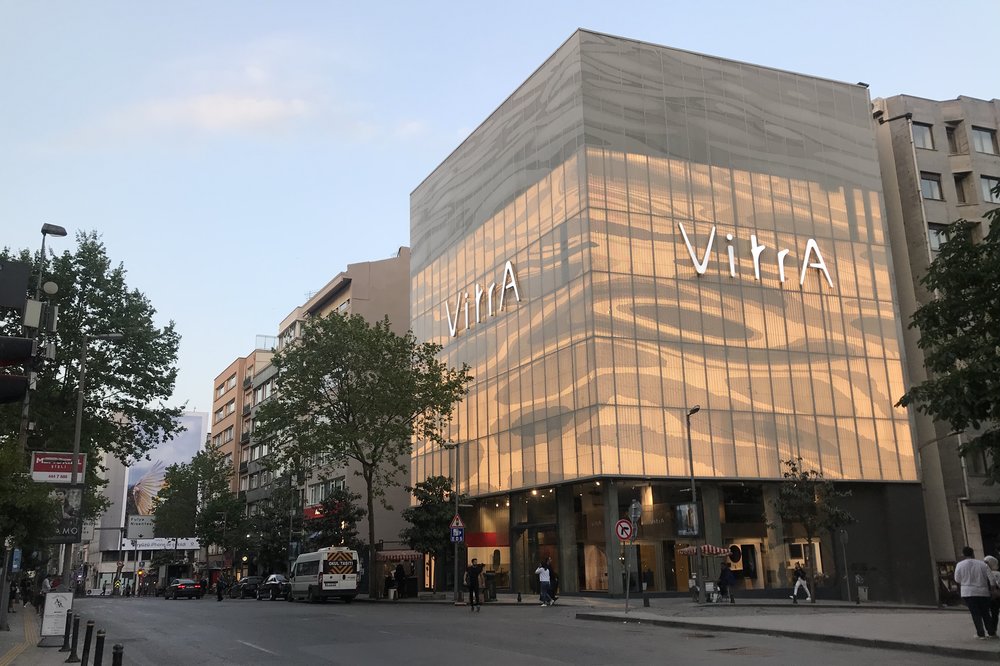
Nisantasi, Istanbul
The Best of Sultanahmet: Hagia Sophia & Blue Mosque
The Sultanahmet district is the centre of Old Istanbul, and it’s home to all of the city’s most widely known attractions. My evening walking tour back in January had taken me through the main points of interest around Sultanahmet, but on this trip I was happy to have a little more time to spend at each place.
Istanbul is also known as the City on the Seven Hills; of those seven hills, Sultanahmet is perched on top of the “First Hill”, which sits at the easternmost end of the peninsula and towers over the Bosphorus Strait on all three sides.
The streets here are narrow, elevated, and winding – a byzantine layout, one might even say.
If you’re taking the buses or metro in from other neighbourhoods, you’ll disembark in the Eminönü transit hub and then either catch the tram or walk up to Sultanahmet. Both will eventually bring you to the central square in Sultanahmet, which separates two of Istanbul’s, and indeed Turkey’s, most famous landmarks from each other.
In some ways, it’s fitting that the Hagia Sophia and the Blue Mosque are positioned as they are, sitting face-to-face across the square. The former was first built as a Christian church, but fell into Muslim hands in 1453 and today serves as a museum, whereas the latter was built in the 17th century as a site of Muslim worship designed to eclipse its originally Christian counterpart.
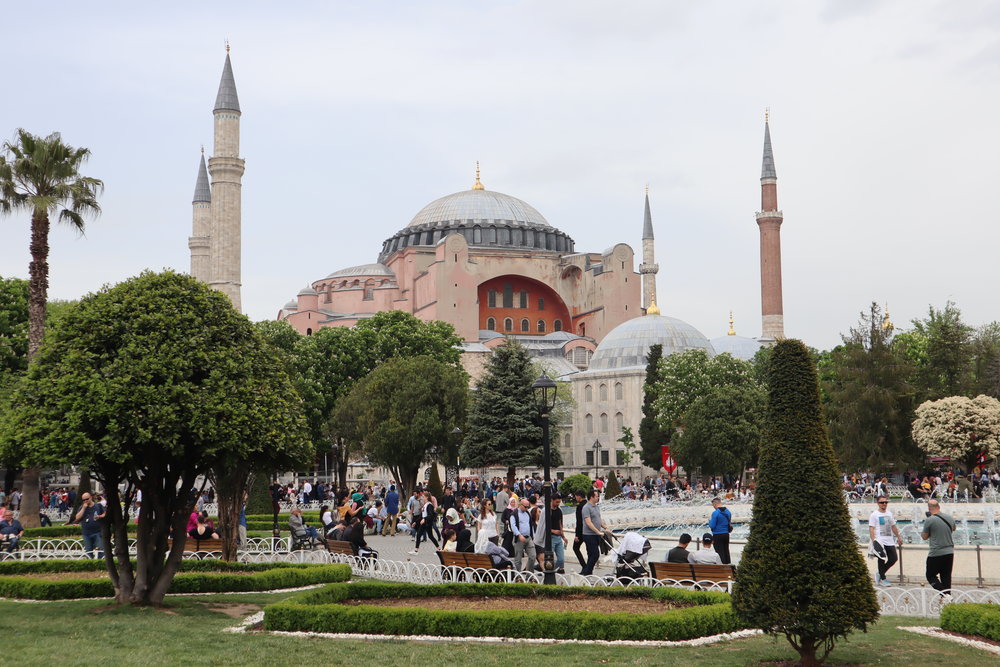
Hagia Sophia
In a city that has functioned on-and-off as either bridge or battleground between East and West, the Hagia Sophia and the Blue Mosque stare each other down like the old foes, their slender minarets soaring imposingly into the sky, sharing between them an air of mutual acceptance and respect but also vivid memories of the centuries of ideological violence witnessed in each other’s company.
The Blue Mosque was closed for worship, so we visited the Hagia Sophia (pronounced “aya-sophia”) first. Originally built as Christian church, the Hagia Sophia was transformed by Sultan Mehmed’s successful invasion of Istanbul in the 15th century into a mosque, symbolizing the victory of Islam over Christianity which eventually shaped the modern Turkish nation.
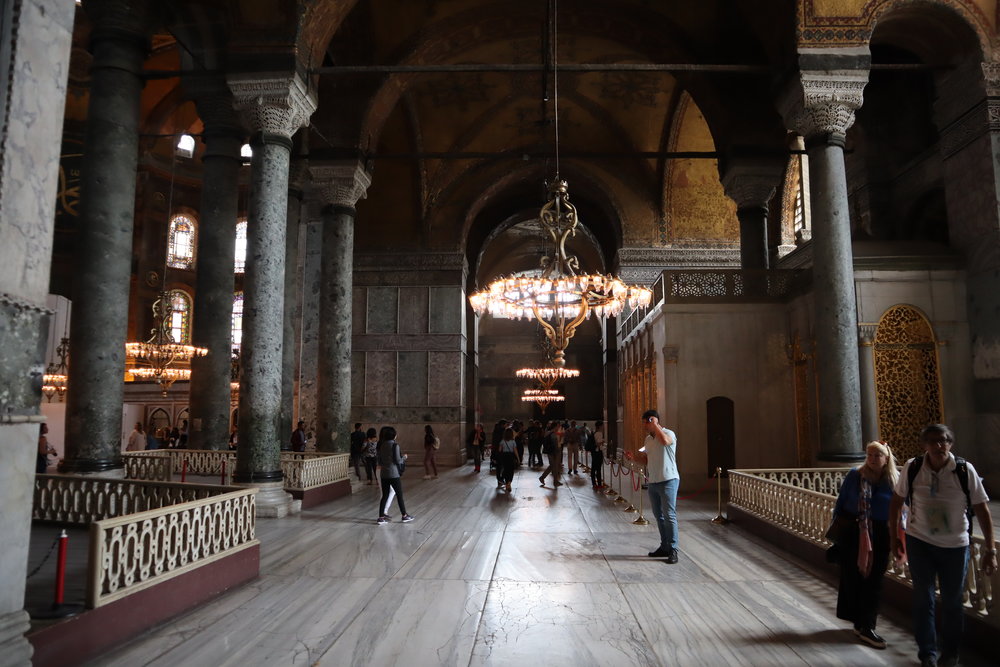
Hagia Sophia
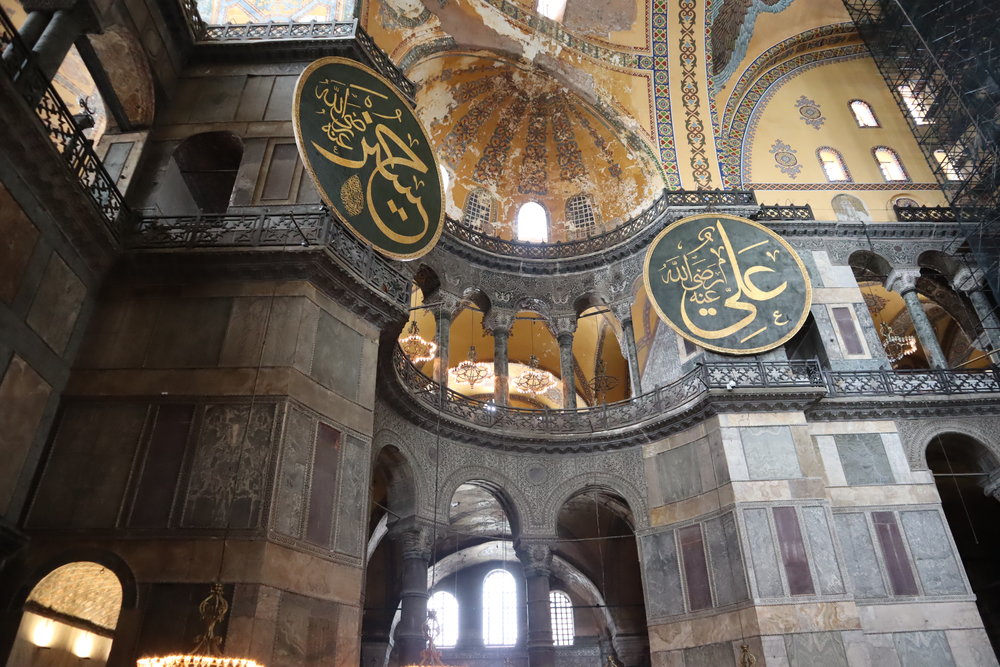
Hagia Sophia
Nowadays, a total of eight great circular panes are marked with the names of Allah, Muhammad, and other significant figures from Islam. And all around them, the splendour of Byzantine architecture – exemplified by the gigantic dome soaring overhead – is on full display.
Keep in mind that the Hagia Sophia no longer functions as a mosque, but rather a museum dedicated to the history of the building, so you’re free to take your time to wander its halls. You can take the stairs up to the higher level to get a closer look at the ornate dome, although I preferred to admire the halls from the ground floor to fully absorb the sheer size of the building. It’s a shame that construction work was taking place when we visited, though, which blocked our view from many angles.
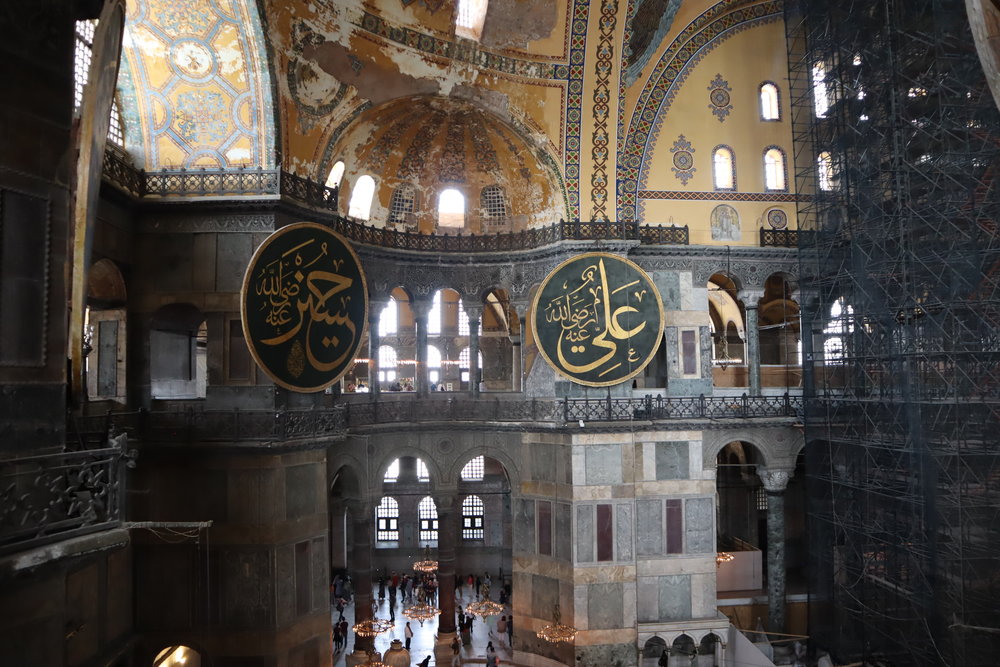
Hagia Sophia
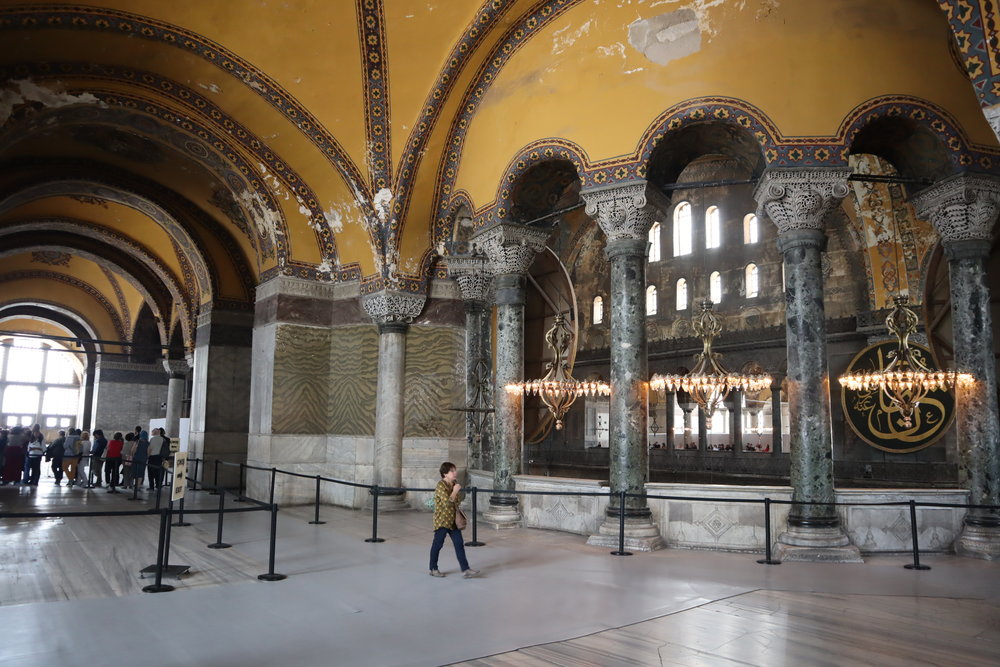
Hagia Sophia
In comparison to the Hagia Sophia, visiting the Blue Mosque is more of a touch-and-go affair, since you must plan your visit around the times of active worship. Once the mosque is open to visitors, you queue up, remove your shoes, and shuffle inside for a look at the building’s famous blue interiors that give it its informal name (the mosque is officially known as the Sultan Ahmet Mosque).
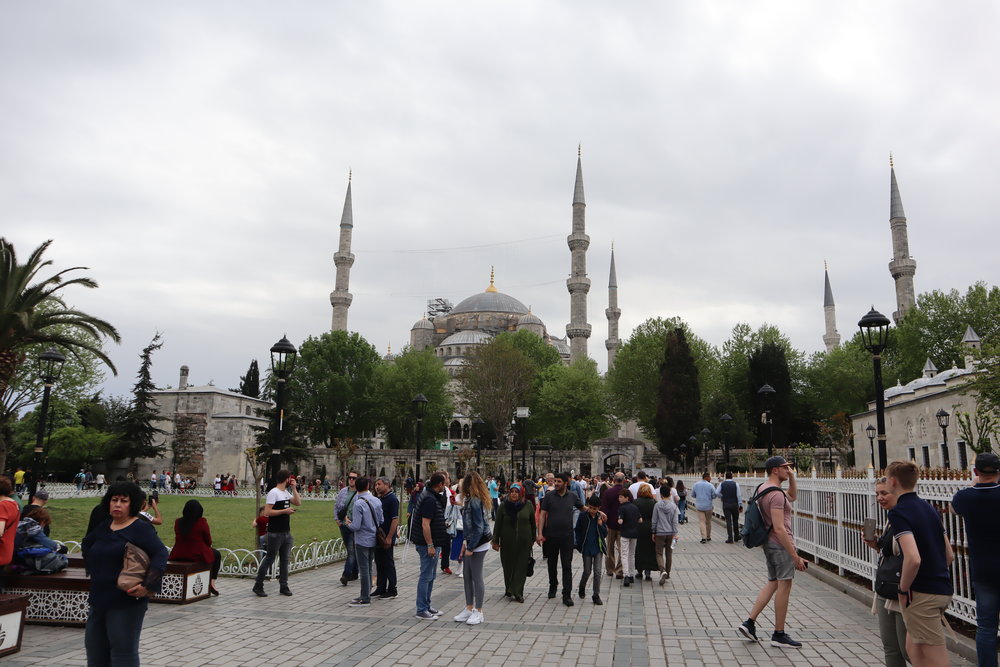
Blue Mosque
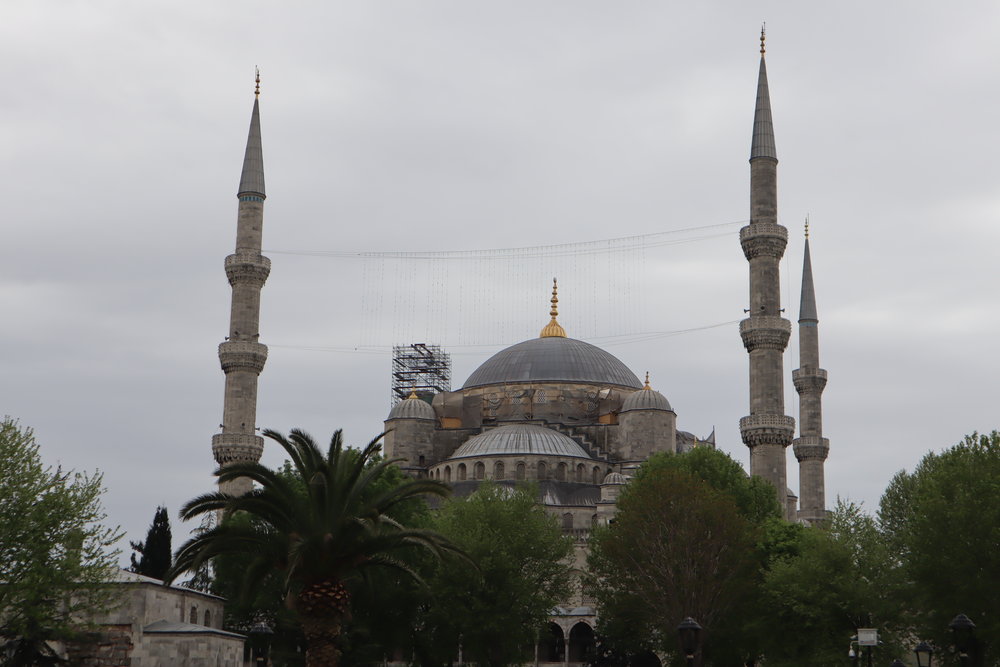
Blue Mosque
When I strolled through the Blue Mosque as part of my walking tour back in January, there had been pretty significant construction works going on inside, and unfortunately those were still taking place in May. As a result, we got to see some parts of the Blue Mosque’s ostentatious interiors, but the main dome remained blocked-off by the scaffolding works.
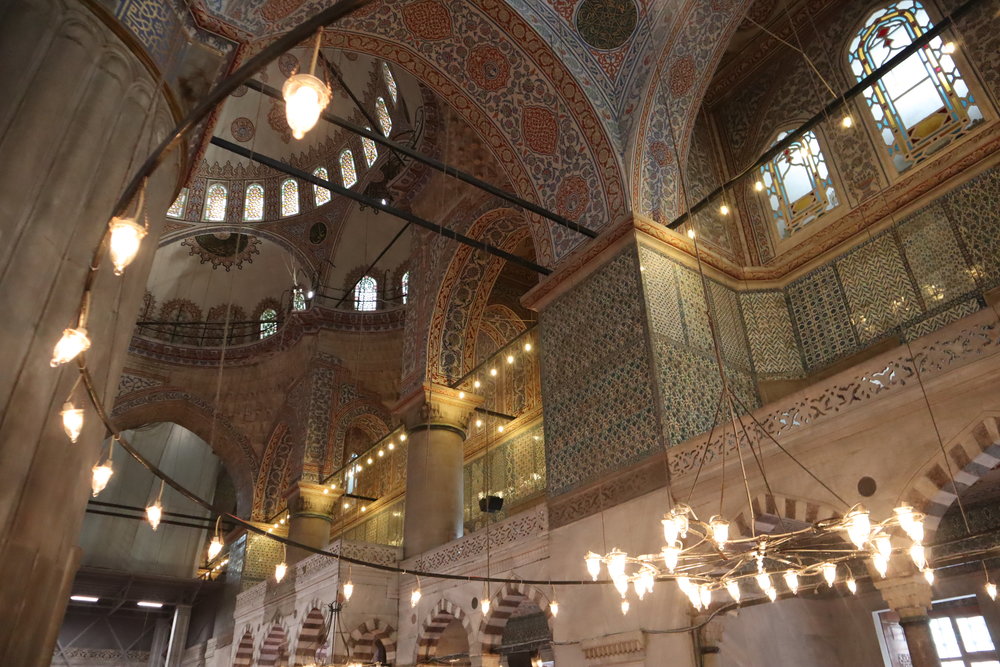
Blue Mosque
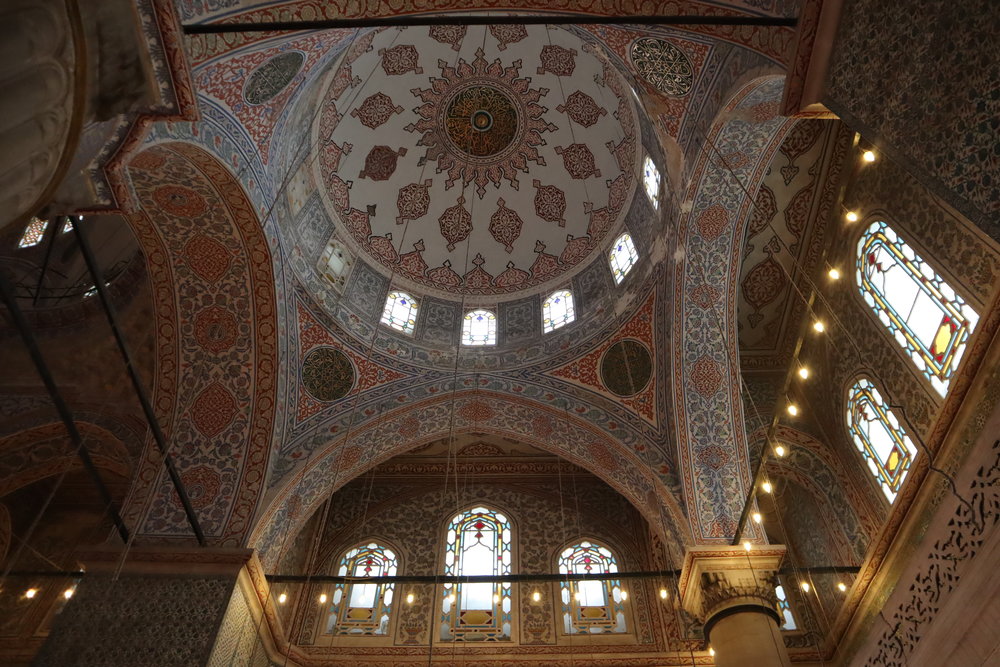
Blue Mosque
The Blue Mosque remains an active place of worship to this day, so there are always people saying their prayers even outside of the official prayer hours. As a visitor, you feel compelled to take a look around, soak in the atmosphere of the place, and be on your way just a little bit quicker.
After visiting both the Hagia Sophia and the Blue Mosque, stop by one of the street vendors around the area for lunch – either find one in the main square if you’d prefer something quick and easy, or venture into the endless side streets of Sultanahmet if you’re looking for some more authentic cheap eats.
Either way, there’s plenty to contemplate – imagine, if the walls of these two buildings could talk, how many endless stories they’d tell? – before you move on to see the rest of Sultanahmet…
Basilica Cistern & Grand Bazaar
Not far from the Hagia Sophia and the Blue Mosque is the Basilica Cistern, a huge cistern that sits underground within the First Hill of Istanbul. The cistern is housed within a large subterranean chamber, supported by a dense forest of 336 marble and granite columns.
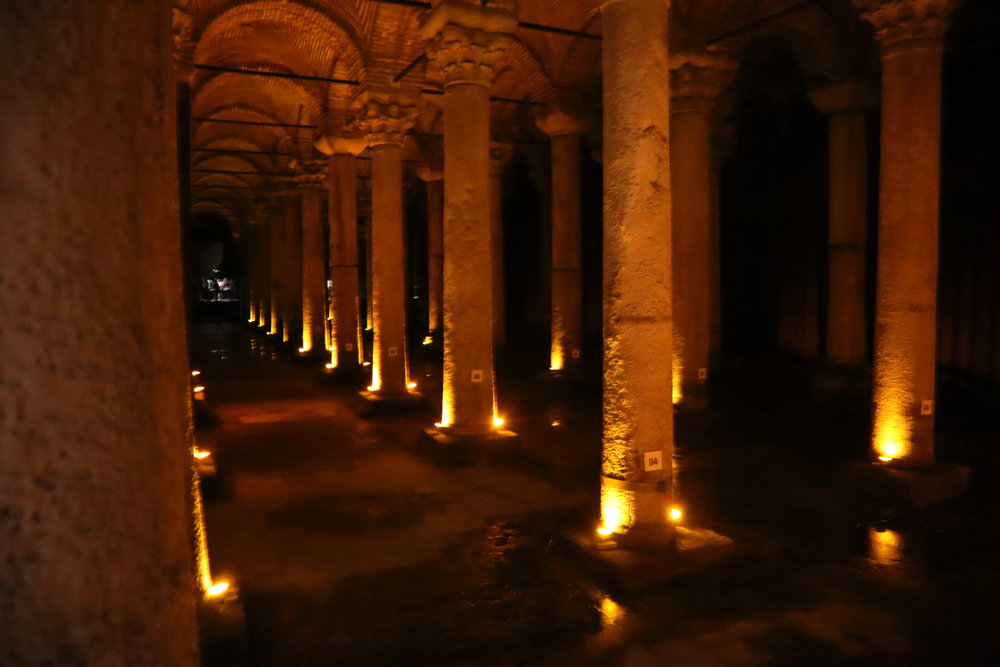
Basilica Cistern
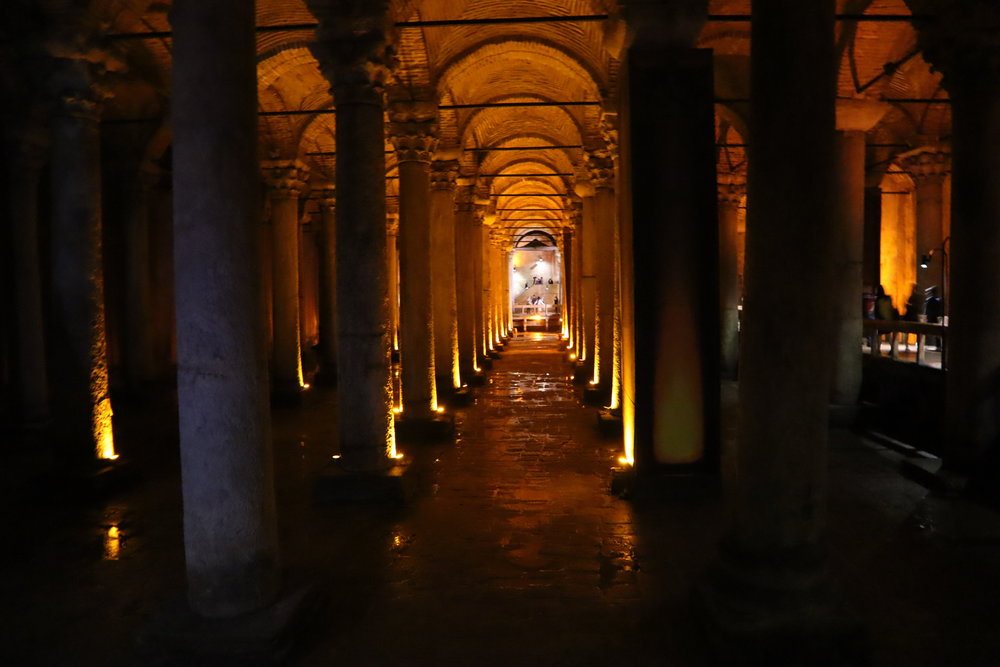
Basilica Cistern
The cistern was used in historical times to provide water supply to the official residences of the various empires that ruled over the city known as Constantinople from atop the First Hill over the centuries. Nowadays, it’s been mostly drained of its waters and serves only as a historical landmark.
Most of the columns are pretty nondescript, serving little function besides supporting the vaulted ceilings above, although there are two columns that have the face of Medusa as their base – one sideways and one upside down, for some reason.
Don’t stare at the faces for too long, lest you become transformed into one of the columns yourself!
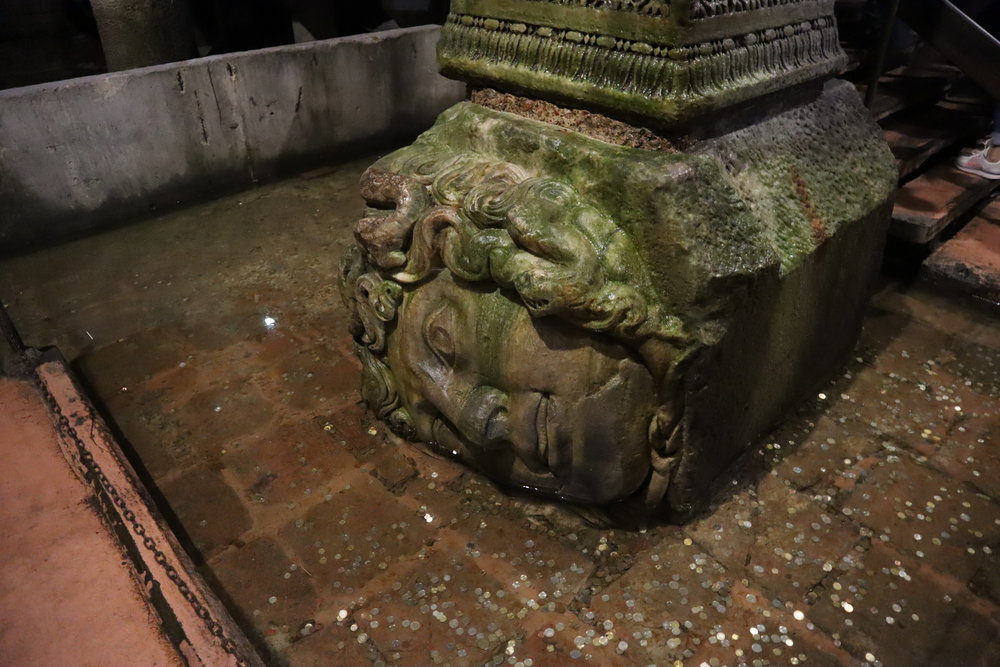
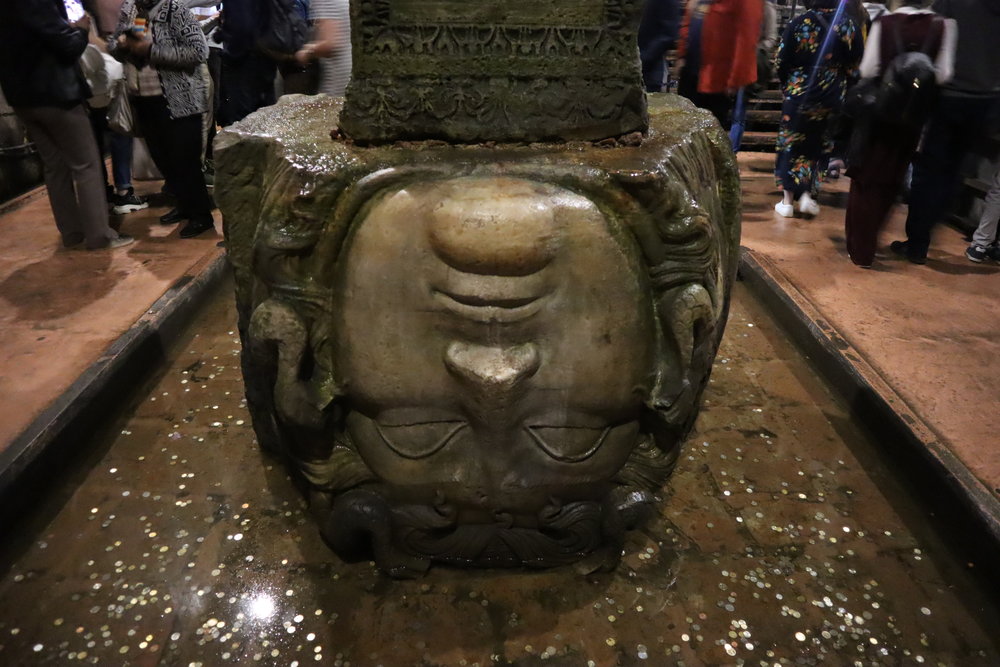
You’ll also want to make some time to visit the Grand Bazaar, which sits on Istanbul’s Second Hill about 15 minutes’ walk to the west. To get there, you’ll traverse the Hippodrome, the foremost circus and major sporting venue in Old Istanbul, today acting as a small pedestrianized city square in the middle of the action here in Sultanahmet.
The Grand Bazaar is a never-ending barrage of sights, sounds, and smells, from the subtle scent of saffron wafting through the hallways, to the endless faux-greetings of “how are you, my friend?” from the storekeepers, to the glow of the many Turkish lamp stores that have set up shop here (these make for excellent Instagram spots, although the owners know this and will try to charge you for the privilege of looking at the lamps while getting your picture taken).
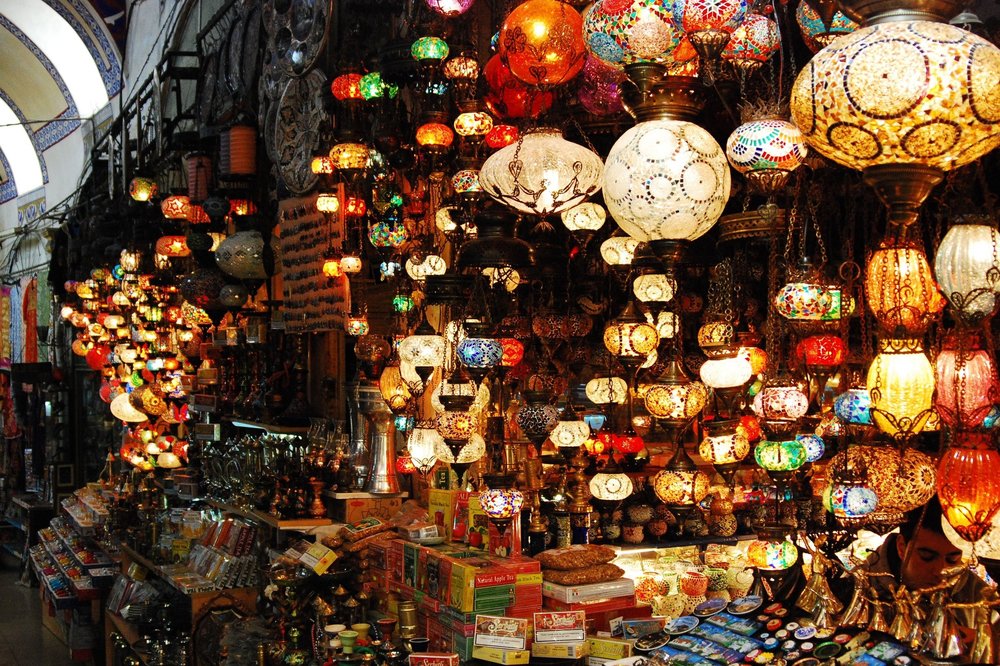
Grand Bazaar
If you feel enticed by anything in the Grand Bazaar’s endless halls, be it the lamps, spices, rugs, ornaments, or knock-off luxury goods, feel free to sharpen your bargaining skills and see how low you can go.
Meanwhile, if you’re simply there to browse around and immerse in the chaotic atmosphere, don’t forget to stop by the Turkish delight stores on your way out and treat yourself to a few free samples!
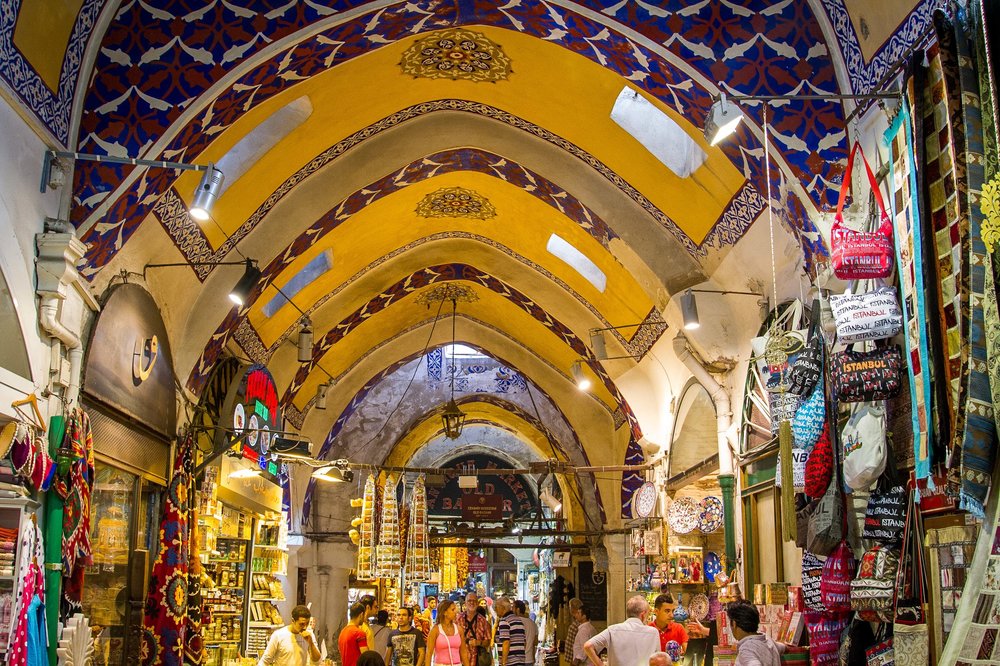
Grand Bazaar
Taksim Square & Istiklal Avenue
As you might imagine for a city that grapples with seven hills and a slow-moving strait among its geographical challenges, Istanbul is a truly sprawling place with several distinct neighbourhoods for you to take your time exploring.
After we spent our first day in Sultanahmet, we started the next day by visiting Taksim Square. While Sultanahmet is the centre of Old Istanbul, Taksim Square is seen as the heart of the modern city, making it the default site of mass gatherings including several significant protests that have taken place in recent years.
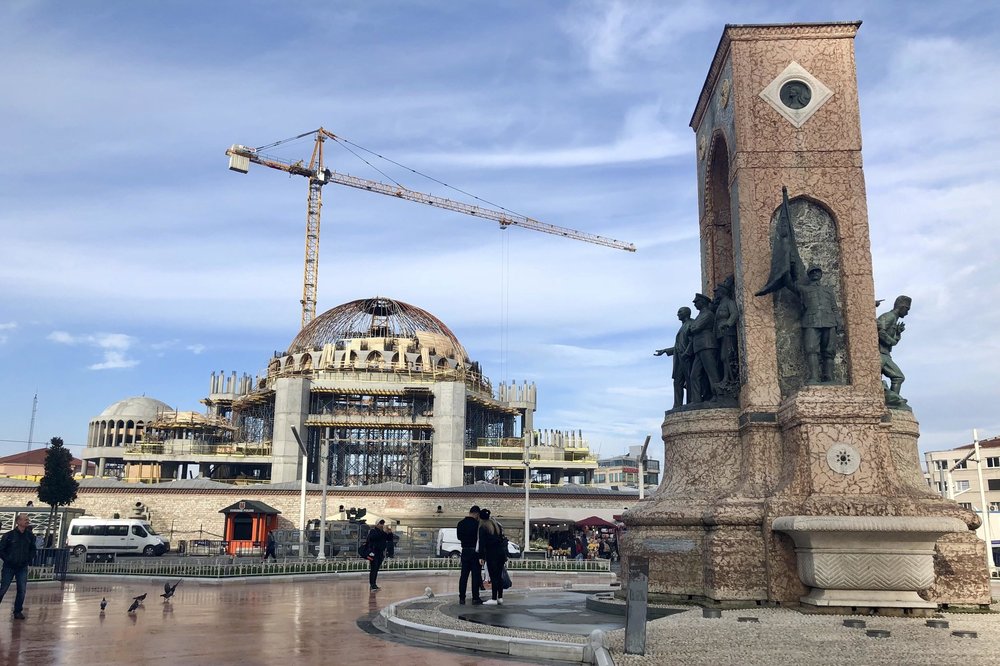
Taksim Square
Adjacent to Taksim Square is the popular Istiklal Avenue, which passes through the Beyoglu neighbourhood as it snakes its way down to the waterfront, eventually culminating in the Galata Bridge that brings you across the water to Old Istanbul.
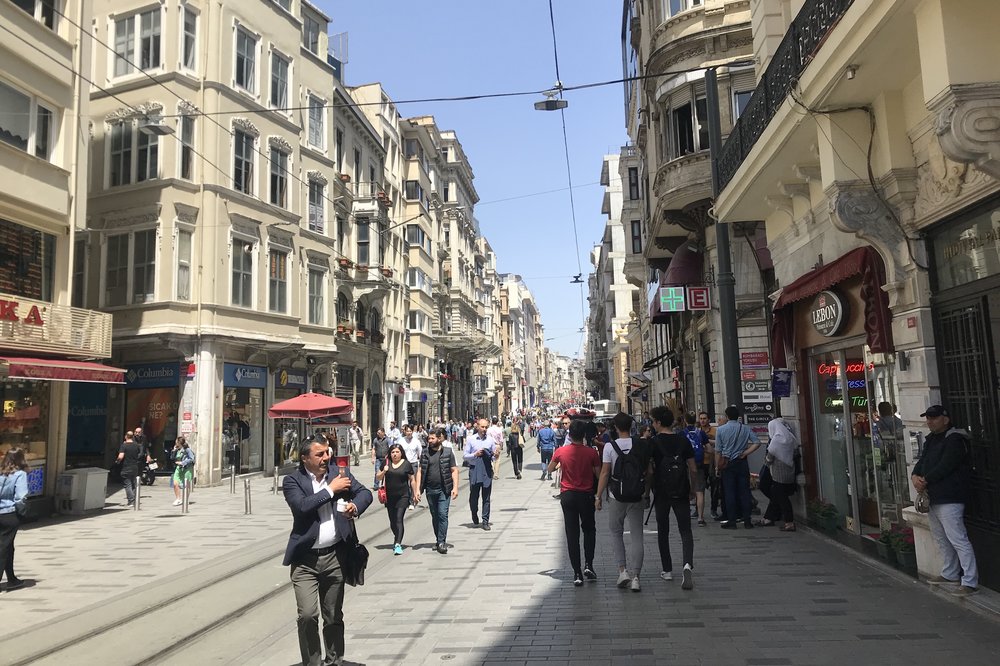
Istiklal Avenue
You’ll find everything here that you might expect from a cosmopolitan pedestrian street: shops, galleries, theatres, cafes, restaurants, bars, you name it.
Be sure to take this opportunity to try out some delicious Turkish food: whether you’re in the mood for a lavish meze spread, some pide (seasoned flatbread), a quick round of iskender kebab, or islak burgers (also known as “wet burgers”, an Istanbul specialty which consists of small meat patties with soft buns drenched in tomato sauce), you’re certain to find something to tickle your fancy.
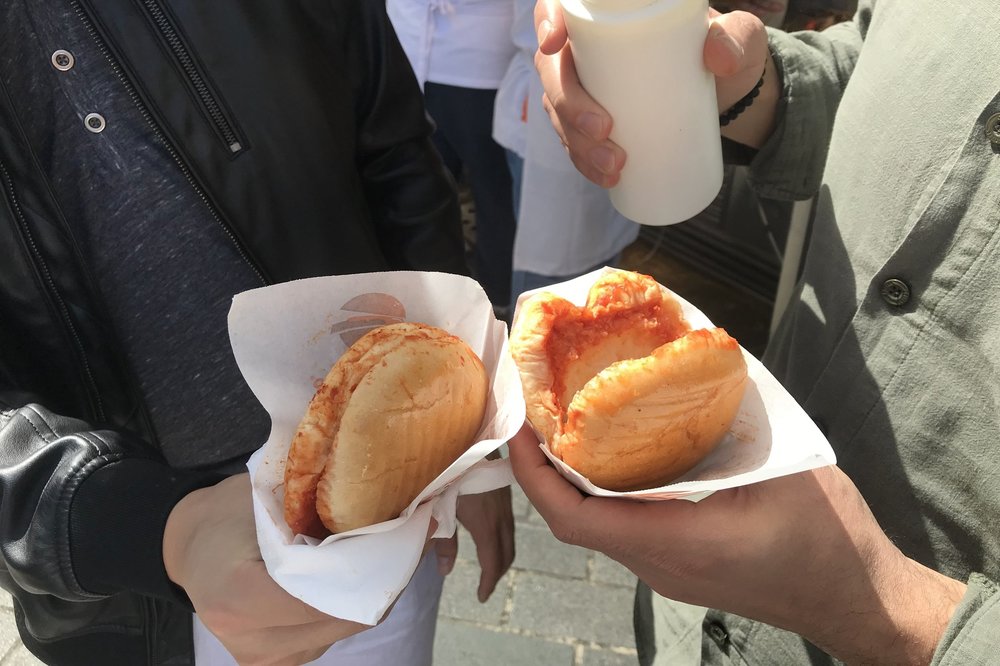
Turkish “wet burger”
(Oh, and move aside Italy – you can’t miss the incredible Turkish gelato, which is infused with salep, a thickening agent that gives the ice cream a delightfully chewy texture. I first tried it onboard Turkish Airlines business class, and indulged in many more helpings during my time in Istanbul.)
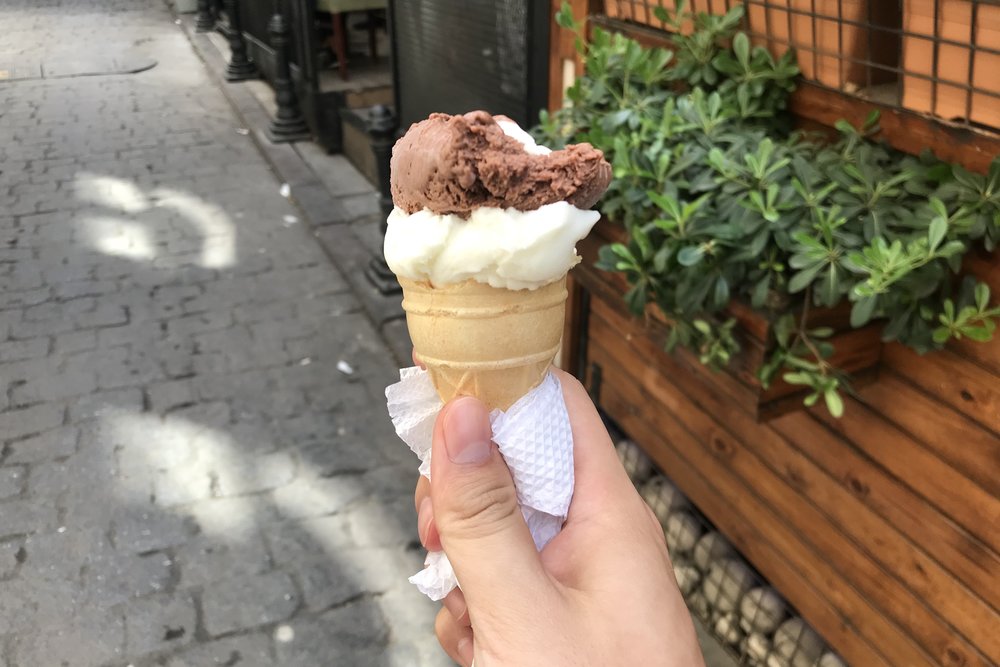
Turkish ice cream!
Walk further down the Istiklal, and when the street begins to slope downwards and transform into a series of stone steps, you’ll soon find on your right-hand side the Galata Tower, a nine-storey tower with a 360˚ viewing deck that’s well worth the wait to go up.
Compared to other cities around the world, Istanbul isn’t really known for its tall buildings, but it nevertheless boasts a memorable skyline of its own. Looking across the water from the vantage point, the views of the mosques and palaces dotting the seven hills of Old Istanbul – their minarets reaching far above the horizon, standing ready to sound the call to prayer every day – is not one you’ll soon forget.
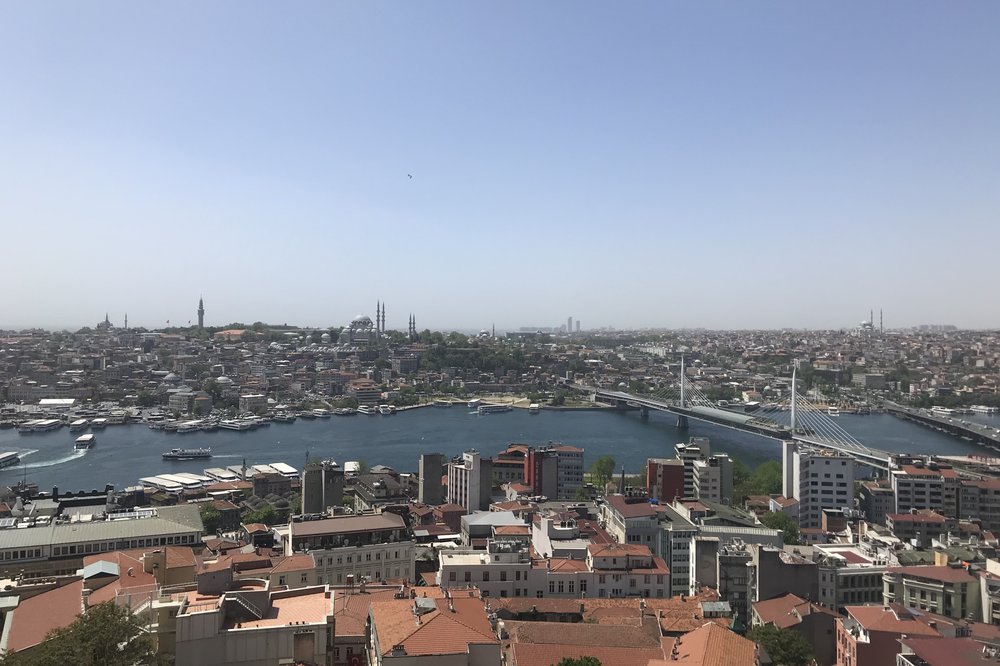
Views from the Galata Tower
Besiktas: Street Food Heaven
On the third day, we met up with Behlul, a local friend of a friend, who took us around the Besiktas quarter, one of Istanbul’s most prominent neighbourhoods with a wealth of shopping, entertainment, scenic views of the Bosphorus, and no shortage of delicious street food either.
Our day began back at Taksim Square, but we took a different direction this time, heading east from the Istiklal to pass through a few charming neighbourhoods and some colourful street art before taking the main coastal road north towards Besiktas.
We passed by Dolmabahçe Palace, the largest palace in Turkey and the seat of the Ottoman Empire and one of Istanbul’s most famous attractions outside of the Sultanahmet. Jessy and I decided to return to the Dolmabahçe a few days later, although we never did make it back here, so it’s definitely on the list for my next time in Istanbul.
Anyway, we continued north along the coast until we reached the Ortaköy Mosque, which is located right on the waterfront. Thinking back to the many mosques we saw in Old Istanbul, the Ortaköy is tiny by comparison, and its position by the water, right beneath the Bosphorus bridge, gives it a certain air of tranquillity.
[foogallery id=”16800″]
(As someone who’s travelled through Western Europe a fair bit, but has still yet to pass through much of the Islamic world, I definitely appreciated the variety in the many mosques we encountered along this trip.)
There are a fair few food vendors around here, and Behlul took this opportunity to introduce us to some more Turkish street foods.
I had thought the “wet burgers” from earlier were a little strange, but they didn’t compare to the kokoreç – grilled lamb intestine, whose flavour certainly took some getting used to.
After that, we tried the kumpir, which is what the Ortaköy district is especially known for – basically loaded potatoes, taken to a whole new level. The potatoes are whipped with butter, sweet corn, and various condiments of your choice, like pickles, olives, bacon bits, sour cream, and cheese.
[foogallery id=”16803″]
There are basically a dozen make-your-own-kumpir vendors lined up along the street here, so choose your condiments wisely and get ready for an artery-clogging afternoon snack!
We retreated to the hotel in the Nisantasi neighbourhood pretty early that day, and along the way, we stopped by the northern part of Maçka Sanat Park in front of our hotel to hang out with the dozens upon dozens of cats that live there.
If you’ve been to Istanbul, you’ll know that it’s a place where the feline friends have well and truly taken over, and nowhere is that more apparent than here in Maçka Sanat Park. I mean, just look at these guys!
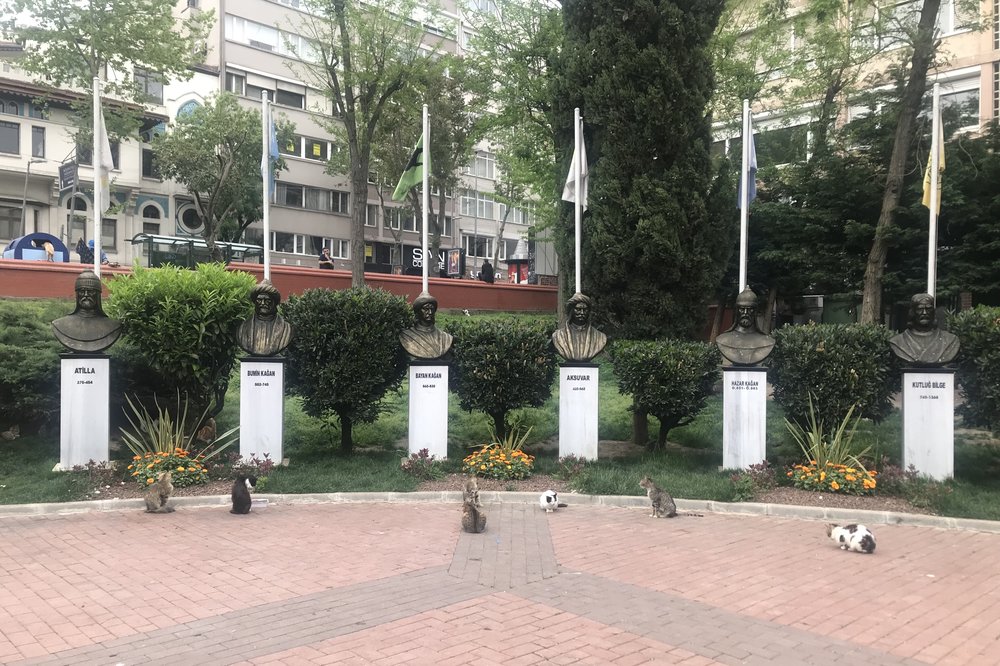
Cats at Maçka Sanat Park
[foogallery id=”16806″]
Kadiköy: Across the Bosphorus Strait
Finally, no visit to Istanbul is complete without a ferry journey across the Bosphorus to visit the Asian side of town – you know, this being the city that straddles two continents and all.
From our hotel, the Kabatas ferry station by Dolmabahçe Palace was the closest place to catch the ferry, which is a 30-minute journey across the strait. If you’re leaving from Old Istanbul, you can also catch the ferry from the Eminönü transport hub on the northern side of the Golden Horn as well.
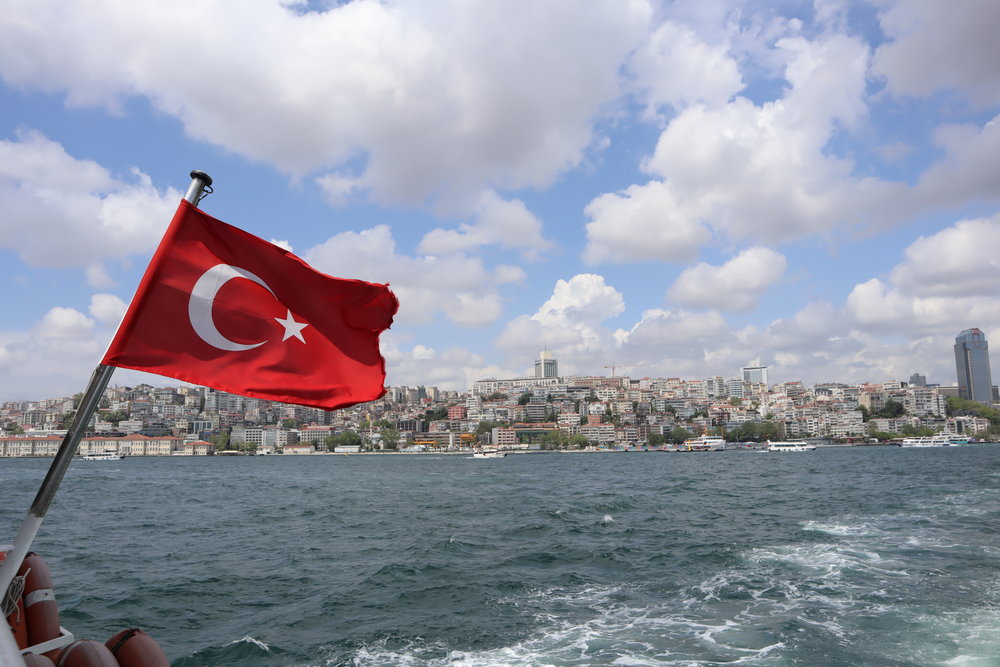
Ferry across the Bosphorus
The main district on the Asian side of Istanbul is Kadiköy, which we found to be one of your average “hip, gentrified, and up-and-coming neighbourhoods” that you might find in a city.
New businesses are moving into refurbished old buildings and cafes are popping up all over the place. There’s a bull statue that’s fun to look at, and a trendy Turkish restaurant named Çiya that a reader had highly recommended to me, although I sadly never got the chance to try.
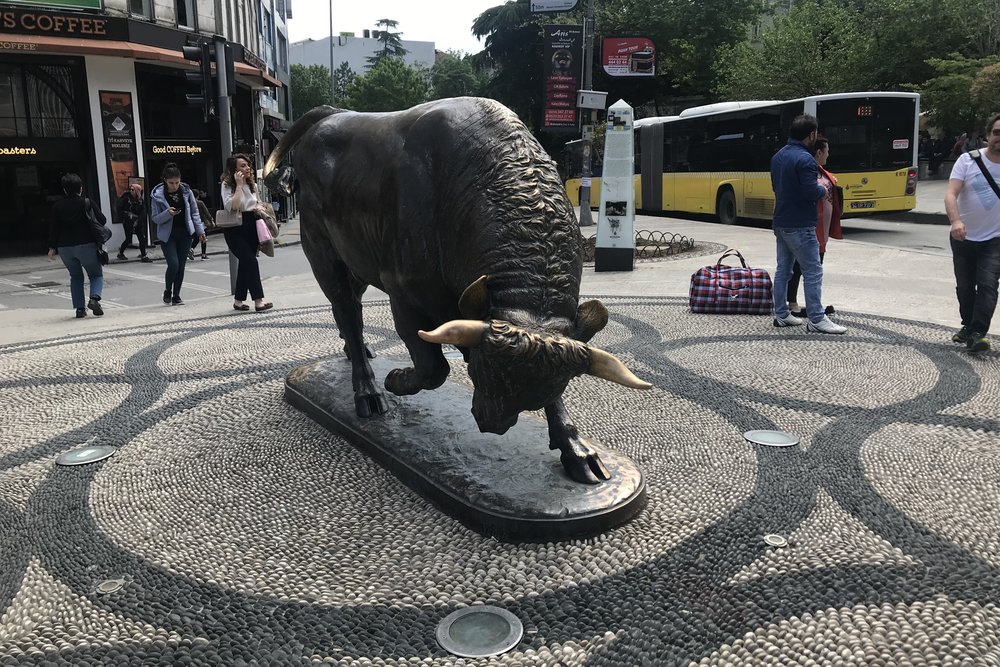
Kadiköy Bull Statue
If you want a snapshot of local life in Istanbul, and it happens to be a Tuesday, head to the Kadiköy Tuesday Market a few kilometres inland. This is nothing like the Grand Bazaar and its warm golden lights; instead, this is where the locals come to get all their stuff on a weekly basis, so be prepared to witness bargaining matches like you’ve never seen them and, if you aren’t too intimidated, to participate on your own.
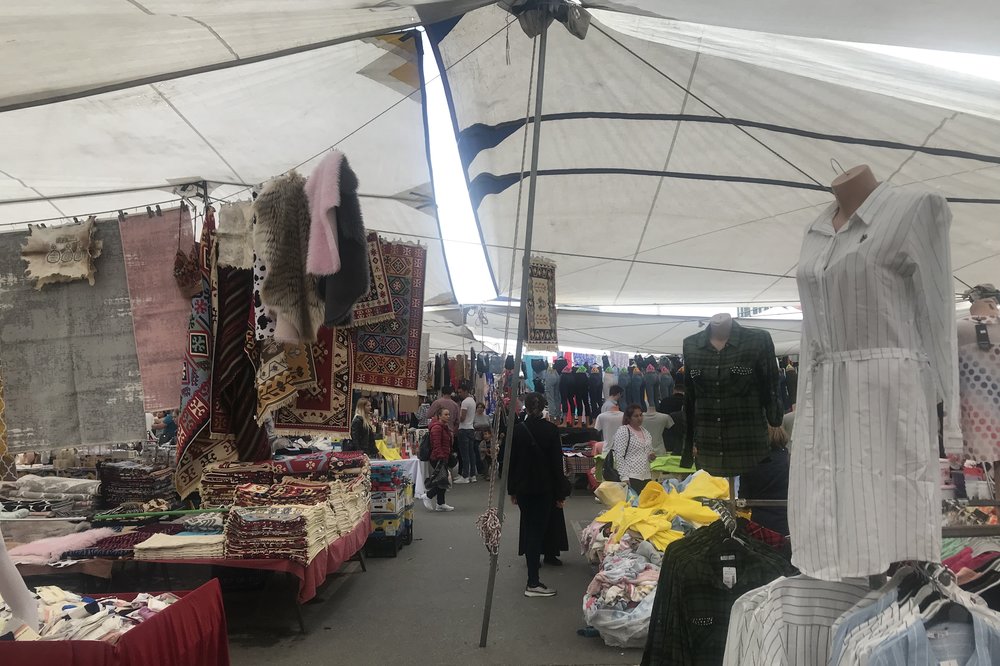
Kadiköy Tuesday Market
Conclusion
Istanbul is not the capital of Turkey, but it certainly feels like nothing less than a major capital of the world, its streets thrumming with the energy that naturally builds up at the heart of several of the world’s great civilizations over history. The goal of this part of the trip was always to explore Istanbul more comprehensively than I had done on my short layover tour, and I’d say we did a pretty good job of it.
Next time in Istanbul, I’d love to check out the Dolmabahçe Palace, see the interiors of the Hagia Sophia and the Blue Mosque for what they truly are (once the scaffolding gets taken away), and continue my journey of discovering new parts of town and trying the street food as I go.
In the next installment, I’ll talk about the remainder of our time in Turkey: the magical few days we spent among the fairy chimneys of Cappadocia.















I was just there for 5 nights. It’s a fantastic city. I got up at the crack of dawn one morning and walked In to the blue mosque with no one there. No one was there. It was serene.
Hagia Sofia is incredible. Definitely need to visit that place at opening.
Check out princes islands next time you’re there. Worth a day trip if you have time.
This post really brought back memories; I really enjoyed my time in Istanbul, although it was a layover – it definitely game me a taste of the city, and I’ll definitely be returning soon! Doesn’t hurt that TK J is a product I enjoy, and was my first J experience, so it will always have a soft spot in my heart.